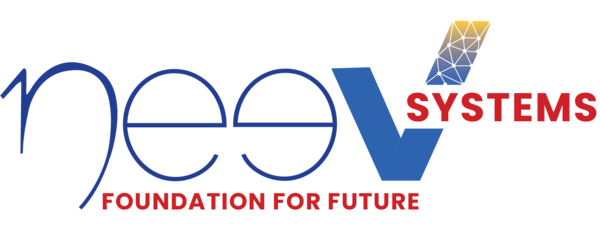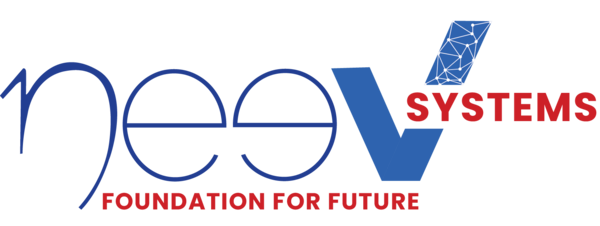Executive Summary
This article addresses the impact of technical debt on business performance, highlighting how it reduces agility, increases costs, and hampers innovation. It discusses various forms of technical debt, such as code, architecture, and infrastructure, and offers practical strategies for managing and reducing it.
By adopting proactive measures like prioritization, continuous refactoring, and best practices, businesses can turn technical debt into an opportunity for long-term efficiency. Partnering with Neev Systems helps organizations manage their technical debt effectively, ensuring greater agility, reduced costs, and sustained innovation.
Key Takeaways
- Having unchecked technical debt reduces agility, increases costs, and stifles innovation.
- Manage technical debt involving prioritization, continuous refactoring, and adopting best practices like automated testing and CI/CD.
- Use effective technical debt management to boost long-term efficiency, enabling your business to stay competitive.
- Capitalize on intentional technical debt for faster time to market and have a competitive edge.
Though data-driven organizations collect and generate massive data volumes daily and invest heavily in system integrations for seamless workflows, many often fail to consider the silent threat that can bring even the most promising projects to their knees. It’s not a virus or security breach but something more insidious: technical debt.
Think of a world-class sprinter, poised at the starting line, ready to break records. Now, picture that same athlete with heavy weights strapped to their ankles. That’s what technical debt does to your organization – it slows you down, saps your energy, and keeps you from reaching your full potential.
Like a high-interest loan, technical debt accumulates over time, promising quick wins but exacting a hefty price in the long run. According to research conducted on 200 projects over 12 months, a project of 1 million lines of code incurs a technical debt of a whopping 306,000 dollars per year!
So, buckle up and get serious about addressing this issue before it’s too late.
Understanding Technical Debt: More Than Just Bad Code
On average, a developer works for around 41.1 hours a week. Of these, they spend 13.4 hours dealing with tech debt, a primary reason for productivity loss.
Have you ever wondered how much your company is losing out of productivity because of technical debt?
It’s crucial to understand that technical debt is not synonymous with bad code or poor design choices. It’s a much more nuanced and complex issue that permeates every level of software development and maintenance. Check to see how many of these are present in your business processes.
The Many Faces of Technical Debt

The Business Impact of Technical Debt
The consequences of unchecked technical debt can be severe and far-reaching:

Benefits of Intentional Technical Debt
While often viewed negatively, intentional technical debt can offer strategic advantages, provided organizations can manage it strategically.


Struggling with technical debt slowing your business down?
Strategies for Managing and Reducing Technical Debt

Now that we understand the scope and impact of technical debt, let’s look at strategies for managing and reducing it effectively.
1. Acknowledge and Measure
The first step in managing technical debt is acknowledging its existence and measuring its extent. This involves:
- Code Analysis Tools: Use static code analysis tools like SonarQube, CodeClimate, or NDepend to identify code smells, complexity, and potential issues.
- Technical Debt Inventory: Create and maintain an inventory of known technical debt items, including their estimated impact and resolution cost.
- Debt Mapping: Visualize technical debt across your system using heat maps or dependency graphs to identify critical areas.
2. Prioritize and Plan
Not all technical debt is created equal. Prioritize based on:
- Business Impact: Focus on debt directly affecting critical business processes or customer experience.
- Future Plans: Prioritize areas that align with upcoming feature developments or strategic initiatives.
- Risk Assessment: Address debt that poses significant security or stability risks.
3. Allocate Resources
Dedicate time and resources to addressing technical debt:
- Debt Sprints: Schedule regular sprints focused solely on tackling technical debt.
- Continuous Refactoring: Encourage developers to refactor code as part of their regular development process.
4. Implement Best Practices
Prevent the accumulation of new technical debt by implementing best practices:
- Coding Standards: Establish and enforce clear coding standards across the organization.
- Code Reviews: Implement rigorous code review processes to catch issues early.
- Automated Testing: Invest in comprehensive automated testing to catch regressions and ensure code quality.
- Continuous Integration/Continuous Deployment (CI/CD): Implement CI/CD pipelines to catch issues early and enable frequent, small releases.
5. Educate and Communicate
Foster a culture of quality and long-term thinking:
- Developer Education: Provide training on clean code principles, design patterns, and best practices.
- Stakeholder Communication: Educate non-technical stakeholders about managing technical debt and its impact on business outcomes.
- Transparency: Regularly report on technical debt metrics and progress to all stakeholders.
6. Leverage Modernization and Refactoring
Strategically modernize and refactor your systems:
- Incremental Refactoring: Break down large refactoring efforts into smaller, manageable chunks.
- Strangler Fig Pattern: Gradually replace legacy systems by building new functionality around them and slowly “strangling” the old system.
- Microservices Architecture: Consider moving towards a microservices architecture to improve modularity and ease future maintenance.
7. Invest in Architecture and Design
Prevent future technical debt through thoughtful architecture and design:
- Architecture Reviews: Conduct regular architecture reviews to ensure systems align with business needs and technological trends.
- Design Patterns: Encourage using established design patterns to solve common problems in a standardized way.
Modular Design: Emphasize modularity and loose coupling in system design to make future changes easier.
Implementing Best Practices for Long-Term Efficiency
While managing existing technical debt is crucial, implementing best practices to prevent its accumulation is equally important for long-term efficiency. Here are some key strategies:

1. Adopt a “Quality First” Mindset
- Expand your definition of “done” to include code quality metrics, test coverage, and documentation.
- Implement quality gates in your CI/CD pipeline that prevent low-quality code from being merged or deployed.
- Make thorough code reviews a non-negotiable part of your development process.
2. Embrace Agile and DevOps Practices
- Implement continuous integration (CI) to catch integration issues early and often.
- Invest in comprehensive automated testing, including unit, integration, and end-to-end tests.
- Aim for frequent, minor releases to reduce the risk and impact of each change.
3. Invest in Developer Tools and Productivity
- Provide developers with powerful, modern IDEs that can catch potential issues in real time.
- Integrate static code analysis tools into your development workflow.
- Use tools like Swagger for API documentation and automated documentation generators for code.
4. Foster a Learning Culture
- Encourage regular knowledge-sharing sessions, tech talks, and internal blogs.
- Implement pair programming or mob programming sessions to spread knowledge and best practices.
- Provide resources and time for developers to stay updated with the latest technologies and best practices.
5. Implement Architectural Best Practices
- Consider a microservices architecture for better modularity and scalability.
- Adopt an API-first approach to ensure clean interfaces between components.
- Design systems to take full advantage of cloud technologies for scalability and reliability.
6. Establish Clear Governance and Policies
- Maintain a technology radar to decide which technologies to adopt, hold, or phase out.
- Document important architectural decisions and their rationale using Architectural Decision Records (ADRs).
- Allocate a specific budget for addressing technical debt in each development cycle.
7. Measure and Monitor Continuously
- Track key metrics like lead time, deployment frequency, change failure rate, and mean time to recovery (MTTR).
- Create dashboards that visualize technical debt trends over time.
- Conduct regular technical audits to identify areas of improvement.
Embracing Technical Debt Management for Competitive Advantage
Managing technical debt is no longer just about keeping your tech team happy with clean code; it’s a business necessity. Organizations that get this right position themselves for long-term success, agility, and innovation.
Here’s the catch: You’re not trying to wipe out technical debt completely. Some of it can be a strategic play, giving you the flexibility to push for speed when you need it most. So, how do you tackle this issue? Manage it smartly and let it fuel innovation without dragging your efficiency down over time.
Companies that take technical debt seriously have an edge. They don’t just talk about digital transformation. They live it. They’re agile, ready to outpace the competition and position themselves as leaders. The question is, are you one of them, or are you letting this opportunity slip through the cracks?
Partnering with Neev Systems is a game-changer for organizations ready to stop letting technical debt slow them down. Our IT and security transformation services offer comprehensive assessments, tailored strategies, and implementation of best practices, helping turn technical debt from a liability into a strategic asset.
With the right approach and partners, managing technical debt becomes a pathway to sustained success and innovation in an ever-evolving digital landscape.

Transform Technical Debt into Opportunity

Sitaram Pothula
With 22+ years of IT experience, Sitaram combines technical expertise with strategic leadership. He has led engineering teams and delivered solutions across BFSI, telecom, and healthcare. Sitaram excels in aligning technology with business goals to drive innovation and efficiency.


